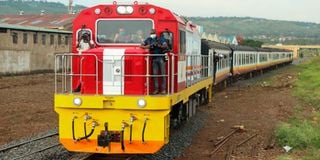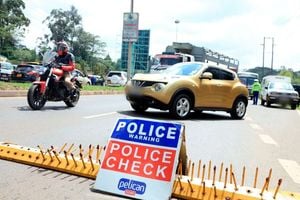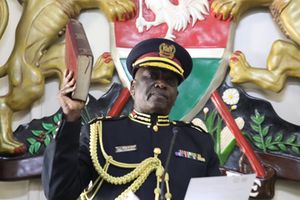Firms eye Mv Uhuru, metre gauge train diesel contracts

A passenger train arrives at Kisumu Railways Station from Nairobi on December 17, 2021.
Oil marketers are in a tight race for a piece of the pie that is the multi-billion-shillings contract to supply diesel to run trains operating on the metre gauge railway and fuel MV Uhuru that plies several routes on Lake Victoria.
A disclosure by the Kenya Railways Corporation (KRC) revealed that it requires about 14.64 million litres of automotive diesel to keep Mv Uhuru and locomotives running on the (MGR) for a year.
This means that marketers have an opportunity to bag a deal for Sh2.5 billion worth of diesel supplies to the corporation going by the prevailing Sh171.60 price per litre of the commodity in Nairobi.
A schedule by KRC shows that the metre gauge trains and Mv Uhuru require about 1.22 million litres of diesel to run monthly. The monthly stocks are required at its various depots including; Changamwe (250,00litres); Makadara and Sagana (470,000), Eldoret (200,000), and Nakuru, Kisumu, and Mv Uhuru (300,000).
The MGR railway serves Nairobi and its environs including, Kahawa, Ruiru, Embakasi, Kikuyu, Limuru, Athi River, and Syokimau. Others are long-distance linkages to Nanyuki and Kisumu.
MV Uhuru, which was refitted by the Kenya Defence Forces in 2019, transports petroleum products from Kisumu port to Port Bell and Jinja in Uganda. The vessel can carry 22 tank wagons bringing a total of 1,100,000 litres of fuel products.
Data by the Kenya National Bureau of Statistics (KNBS) shows that revenue generated from passenger transit services on the MGR dipped 6.2 per cent to Sh84.2 million during the first half of this year compared to a corresponding period last year when the earnings stood at Sh89.7 million.
The figures by KNBS indicate that the drop was caused by a slump in the number of commuting passengers which fell 25.5 per cent to 1.2 million down from the 1.7 million recorded during the six months to June last year.
During the period under review, the long-haul train service to Kisumu which was relaunched in December 2021 after KRC cited surging demand, especially for holiday travellers was the most lucrative after it handed KRC Sh17.3 million in revenue having ferried a total of 21,180 passengers.
The Nairobi-Ruiru route was the second-most profitable earning Sh15.7 million after a total of 296,562 passengers commuted through the line, although this was a dip from the Sh19.2 million earned between January and June last year.
Other top-earning routes during the period included the Nairobi-Embakasi line which raised Sh13.2 million, the SGR linking route (Sh10.96 million), as well as the Nairobi-Kikuyu-Limuru route (Sh6.6 million).




